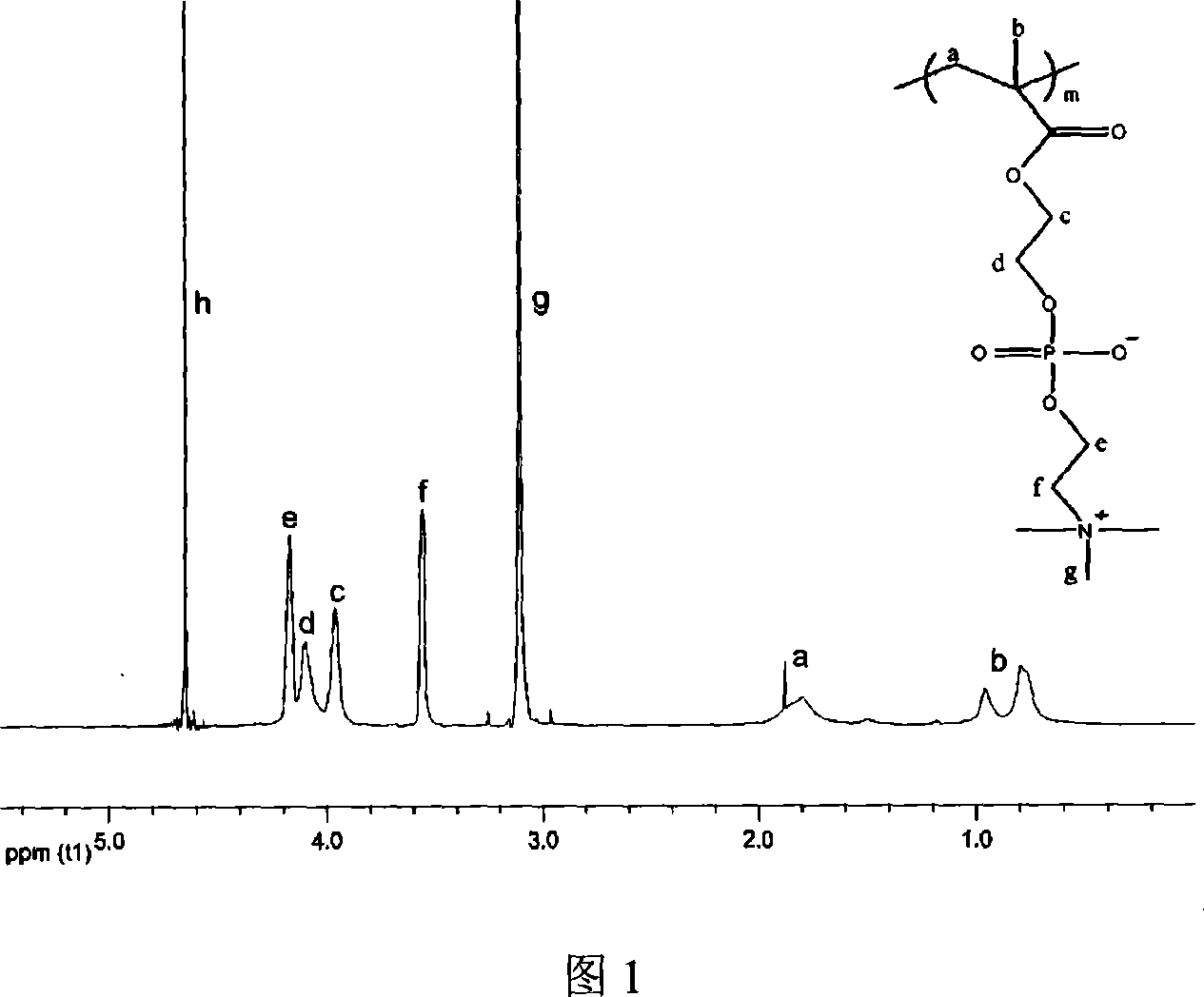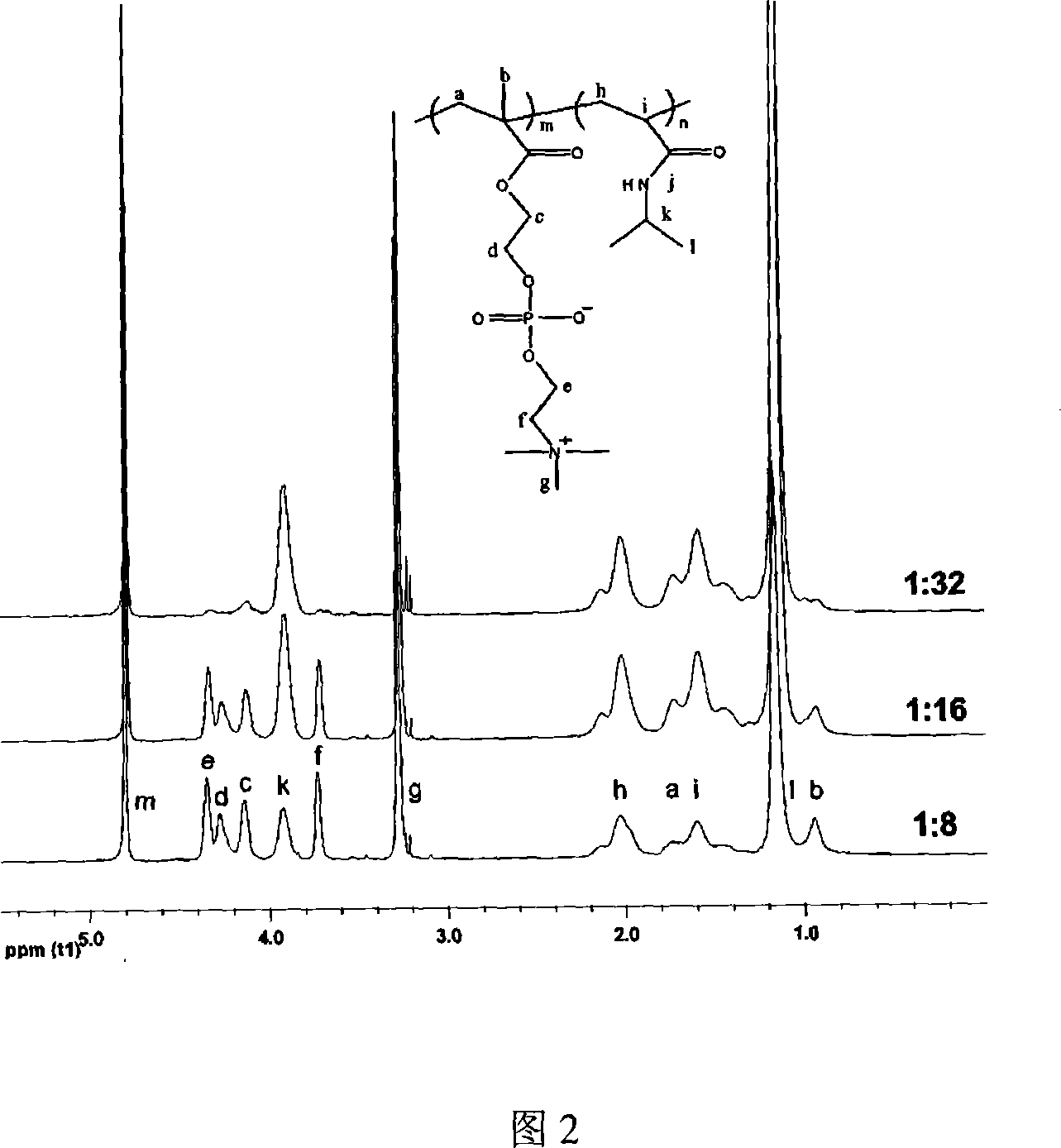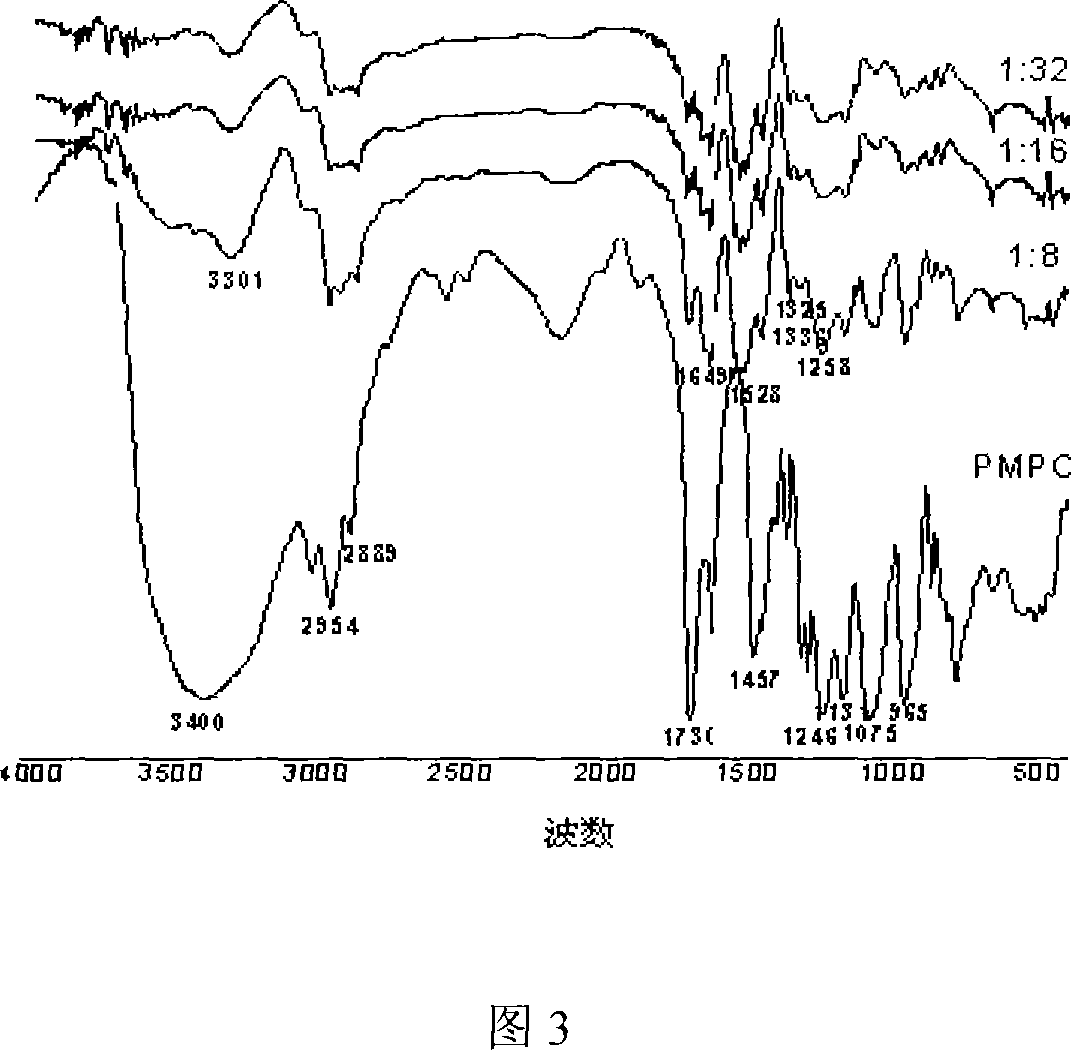Temperature sensitive MPC-b-NIPAM biblock star type polymer for vessel embolism material and preparation method and application
A kind of vascular embolism, di-block technology, applied in the preparation of vascular embolism materials, temperature-sensitive MPC-b-NIPAM di-block star copolymer field, can solve the problems of copolymer dehydration, severe, etc., achieve fast transformation speed, The effect of regular structure, good water retention and biocompatibility
- Summary
- Abstract
- Description
- Claims
- Application Information
AI Technical Summary
Problems solved by technology
Method used
Image
Examples
Embodiment 1
[0030] The first step, the preparation of initiator three (2-bromoisobutyryloxy) ethylamine (TrisE), process is as follows:
[0031] Add 5.0 g of sodium hydroxide to 5.0 g (33.5 mmol) of triethanolamine before the reaction, and let stand for three days to remove water. Dissolve 5.0g (33.5mmol) of triethanolamine (33.5mmol) and 60ml of triethylamine after dehydration in 200ml of tetrahydrofuran in a round-bottomed flask, and simultaneously dissolve 45.98g (24.7ml, 0.20mol) of bromoisobutyryl bromide in 100ml of tetrahydrofuran, and then added to the dropping funnel, and added dropwise into the above-mentioned round-bottomed flask (0° C. ice-water bath) within 1 h under controlled addition rate, and continued to stir for 2 h. The ammonium salt was removed by filtration, the reactant was vacuum-dried at 30° C., and the dried product was washed with 0.1 mol / L sodium carbonate. It was extracted three more times with dichloromethane, then dried over magnesium sulfate. The solvent ...
Embodiment 2
[0041] The synthesis steps of the initiator TrisE and the macromolecular initiator PMPC-Br are the same as those in Example 1.
[0042] Only change the addition amount of NIPAM to be 3.2590 (28.8mmol) in the third step reaction, make P(I-(MPC 10 -b-NIPAM 160 ) 3 ) copolymer.
[0043] Proton NMR spectrum detection: Weigh 15mg P(I-(MPC 10 -b-NIPAM 160 ) 3 ) sample dissolved in deuterated water (D 2 O) in, record on NMR spectrometer Varian UNITY plus 400 1 H-NMR spectrum, as shown in Figure 1 and Figure 2.
[0044] Infrared spectrum detection: the application of Bio-Rad FTS 6000 Fourier Transform Infrared Spectrometer to determine MPC homopolymer and P(I-(MPC with a copolymerization ratio of 1:16 10 -b-NIPAM 160 ) 3 ) infrared spectrogram of the copolymer sample, as shown in Figure 3.
[0045] Rheological performance test: the instrument used is a rotational rheometer RELOGICA INSTRUMRENTS AB. For 5%P(I-(MPC 10 -b-NIPAM 160 ) 3 ) sample using Bob-Cup 25 abrasive to...
Embodiment 3
[0047] The synthesis steps of the initiator TrisE and the macromolecular initiator PMPC-Br are the same as those in Example 1.
[0048] In the third step reaction, only changing the addition of NIPAM is 1.6295g (14.4mmol) to make P(I-(MPC 10 -b-NIPAM 80 ) 3 ) copolymer.
[0049] Proton NMR spectrum detection: Weigh 15mg P(I-(MPC 10 -b-NIPAM 80 ) 3 ) sample dissolved in deuterated water (D 2 O) in, record on NMR spectrometer Varian UNITY plus 400 1 H-NMR spectrum, as shown in Figure 1 and Figure 2.
[0050] Infrared spectrum detection: the application of the instrument Bio-Rad FTS 6000 Fourier transform infrared spectrometer to measure the P(I-(MPC with a copolymerization ratio of 1:8 10 -b-NIPAM 80 ) 3 ) infrared spectrogram of the copolymer sample, as shown in Figure 3.
PUM
 Login to View More
Login to View More Abstract
Description
Claims
Application Information
 Login to View More
Login to View More - Generate Ideas
- Intellectual Property
- Life Sciences
- Materials
- Tech Scout
- Unparalleled Data Quality
- Higher Quality Content
- 60% Fewer Hallucinations
Browse by: Latest US Patents, China's latest patents, Technical Efficacy Thesaurus, Application Domain, Technology Topic, Popular Technical Reports.
© 2025 PatSnap. All rights reserved.Legal|Privacy policy|Modern Slavery Act Transparency Statement|Sitemap|About US| Contact US: help@patsnap.com



